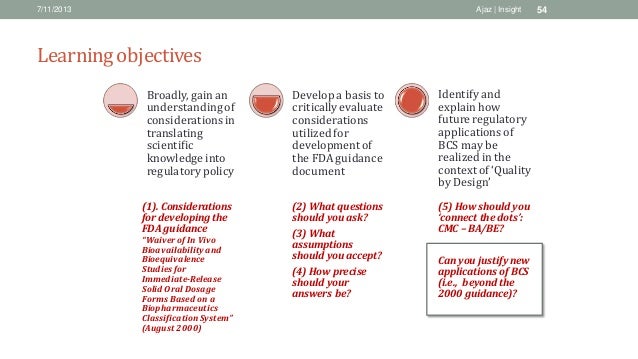Fda Guidance Bcs Classification
The International Council for Harmonisation (ICH) last week released a presentation explaining aspects of its upcoming guideline on biopharmaceutics classification system (BCS)-based biowaivers for bioequivalence studies. The draft version of the guideline, which reached Step 2b of the ICH process in June has been sent to ICH regulatory members for consultation. ICH says it expects the guideline to be adopted in May 2019. The guideline is being developed to harmonize an approach to biopharmaceutics classification of drugs and provide recommendations for when bioequivalence studies can be waived.
Due to differing requirements in different regions and different interpretation of biopharmaceutical classifications, drugmakers may end up following different approaches in different regions to developing generic drugs. Using the biopharmaceutics classification system, drugs fall into four classes based on the aqueous solubility and intestinal permeability of the drug substance.
Awe Zip is a free tool to unarchive many different kinds of archive files. Rar opener free. • When an archive is opened in Awe Zip, its contents are displayed. Select files and folders, which should be extracted.
Fda Guidance Bcs Classification 2017
Biopharmaceutics Classification System (BCS) Class I: high solubility, high permeability Class II: low solubility, high permeability Class III: high solubility, low permeability Class IV: low solubility, low permeability According to ICH, guidelines in the US, EU, Japan, Canada and from the World Health Organization (WHO) provide slightly different recommendations on bioequivalence and biowaivers. 'It appears from these guidelines that BCS-based biowaivers may not be recognized globally or that the requested supportive data for such applications differs,' ICH wrote in its 2016 on the need for a harmonized approach. ICH says the guideline, will apply only to BCS Class I and III immediate-release, solid oral drugs or suspensions designed to deliver drugs for system circulation. Drugs with a narrow therapeutic index should not considered for BCS-based biowaivers and fixed-dose combination drugs may be eligible for BCS-based biowaivers so long as all the active ingredients fulfill the criteria for such a waiver. Once adopted, ICH says the guideline should 'reduce the need for in vivo bioequivalence studies and support streamlined global drug development.'

Bcs Classification System
Guidance for Industry: “Waiver of in vivo Bioavailability and Bioequivalence Studies for Immediate-Release Solid Oral Dosage Forms Based on a Biopharmaceutics Classification System”. Food and Drug Administration, Center for Drug Evaluation and Research, 2000. The Biopharmaceutics Classification System (BCS) is the result of continuous efforts in mathematical analysis for the elucidation of the kinetics and dynamics of the drug process in the gastrointestinal tract (GIT) for NDA (New Drug Application) and ANDA (Abbreviated New Drug Application) filings and biowaivers.